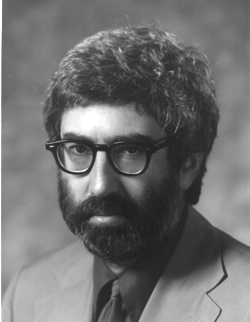In Memory of
EDWARD F. ASSMUS, JR. '53
1932-1998
World-Renowned Mathematician
By Harold Frazyer Mattson Jr. '51
 Ed Assmus died suddenly at the age of 66 on the evening of March 18 while participating in the Workshop on Designs and Codes at Oberwolfach, Germany. Shocked and saddened, the other participants held a memorial service for him the following day and then canceled the rest of the meeting.
Ed Assmus died suddenly at the age of 66 on the evening of March 18 while participating in the Workshop on Designs and Codes at Oberwolfach, Germany. Shocked and saddened, the other participants held a memorial service for him the following day and then canceled the rest of the meeting.
Ed retired from his position at Lehigh University in July 1994 after 28 years as a member of the faculty there. During that time he had become world-renowned for his work in codes and designs, areas of mathematics with major applications in computer memories, compact disks, photography of outer space, and the design of statistical experiments.
When he started his research in codes in 1962 most mathematicians had never heard of the subject and his work did much to make coding theory recognized by mathematicians. His most important work includes a close collaboration with H.F. Mattson, Jr., in the 1960s, resulting in a much-quoted theorem linking codes and designs known as the Assmus-Mattson Theorem. This theorem spawned other important connections in the theory of designs and finite geometries.
In 1970 at Obewolfach he introduced his coding-theoretic approach to the famous problem on the projective plane of order 10. The problem: is there a projective plane of order 10? The question had baffled mathematicians since the early part of this century. Ed established basic properties of the code, spanned by the rows of the incidence matrix by the plane...if it existed. His approach, extended by several subsequent researchers, was the key to the proof by Lam that no such plane exists. This and other works demonstrate that coding has applications in areas of pure science as well as in communications.
A more recent collaboration from the late 1980s onwards examined the codes associated with combinatorial designs, hoping to use the codes as a classification tool for the designs. The outcome was a series of research papers on topics which included the construction of a new infinite family of Steiner 3-designs, and methods to find designs among the codewords of codes associated with other designs of the same parameters. The culmination of the joint work was a successful research monograph on the link between designs and codes.
Born on April 19, 1931, in Nutley, New Jersey, Ed was educated at Oberlin College and at Harvard, where he obtained his doctorate in 1958. For the next four years he was employed as Office of Naval Research associate and Ritt instructor at Columbia, later moving on to Wesleyen as a lecturer. It was during that period that his interests shifted from homological algebra to applied combinatorics. He joined the faculty at Lehigh University in 1966 as associate professor and was promoted to professor in 1970. In May 1993 he was awarded the title of distinguished professor. He retired in July 1994.
During his time at Lehigh he had many productive visiting positions in the US, Canada, and Europe. His excellence as a lecturer kept him in demand as an invited speaker at many universities and conferences. His publications list includes approximately 60 research papers and many book reviews, and he worked with eight successful doctoral students. After his retirement he remained professionally active, traveling extensively and often invited to spend extended periods at various prestigious research establishments. In particular, he frequently spent some months at INRIA, near Versailles, working with Paul Camion and Pascale Charpin at Project Codes.
Ed is survived by his wife Susan, daughter Alexi, and son Richard.
HAROLD FRAZYER MATTSON, JR. is professor of computer/information science at Syracuse University.